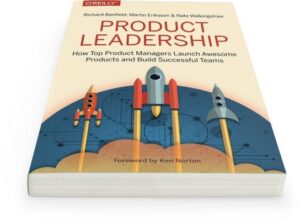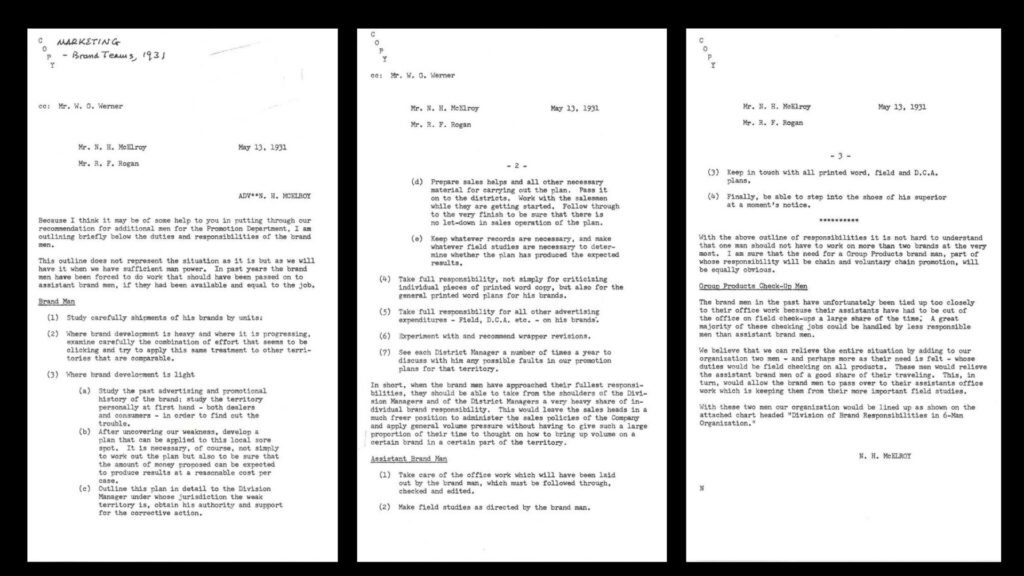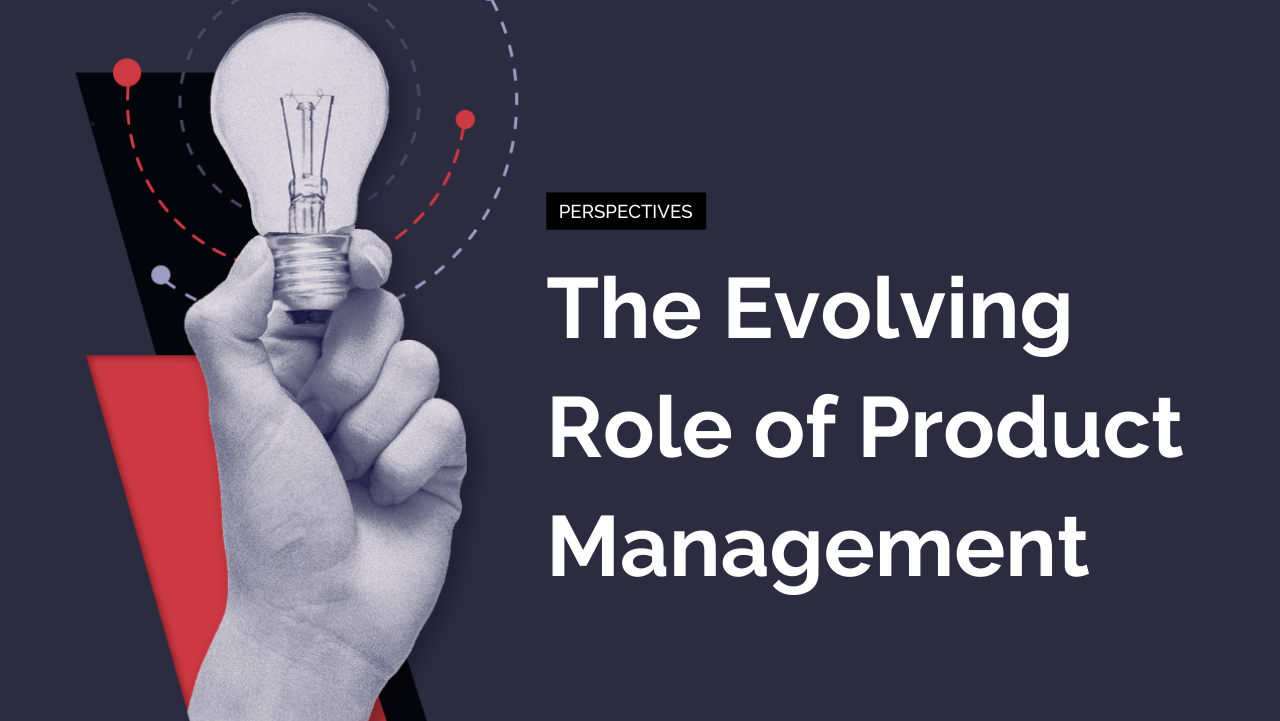This post is an excerpt from Chapter 1 of “Product Leadership” by Richard Banfield, Nate Walkingshaw, and Martin Eriksson. Read the full book on Safari.

As Marty Cagan, founding partner of Silicon Valley Product Group and a 30-year veteran of product management, puts it, “The job of a product manager is to discover a product that is valuable, usable, and feasible.” Similarly, co-author Martin Eriksson, in his oft-quoted definition of product management, calls it the intersection between business, user experience, and technology (see Figure 1; only a product manager would define themselves in a Venn diagram!). A good product manager must be experienced in at least one, passionate¹ about all three, and conversant with practitioners of all three.

Product management has been called the intersection between business, technology, and user experience (source: Martin Eriksson, 2011).
Business
Product management is above all else a business function, focused on maximizing business value from a product. Product managers should be primarily focused on optimizing a product to achieve business goals while maximizing return on investment.
User experience (UX)
Perhaps most importantly, the product manager is the voice of the customer inside the business, and thus must be passionate about customers and the specific problems they’re trying to solve. This doesn’t mean the product manager should become a full-time researcher or a full-time designer, but they do need to make time for this important work. Getting out to talk to customers, testing the product, and getting feedback firsthand, as well as working closely with internal and external UX designers and researchers, are all part of this process.
Technology
There’s no point in defining what to build if you don’t know how it will get built. This doesn’t mean a product manager needs to be able to code, but understanding the technology stack — and most importantly, the level of effort involved — is crucial to making the right decisions. This is key in an Agile world where product managers spend more time with the development team than with anyone else inside the business, and need a shared language and understanding with their engineers.
Other functions, like team development, marketing, and strategic planning, play a part too, but business, UX, and technology form the core of what product managers do every day.
The product management role
Earlier we said that good managers are not necessarily good leaders. Good leaders, however, must be good managers, so in this section we will discuss the role of product manager and how it overlaps the role of product leader.
Why does a product manager need skills in areas like business, UX, and technology? Primarily because the role itself is incredibly broad and varied. Nilan Peiris, VP of product and growth at TransferWise, says that product managers need to “do whatever needs to be done.”
“One of the really fantastic things about product management, but also one of the real stresses of it, is that it is a very broad role. You have to be able to be really good at strategy, be inspirational, and understand the long-term picture. At the same time, you have to be really good at the operational side and making things happen.” Tanya Cordrey, former chief digital officer at the Guardian.
This starts with setting a vision for the product. The product manager should research their market, their customer, and the problem the customer is trying to solve. They have to assimilate huge amounts of information — including qualitative feedback from customers, quantitative data from analytics tools and statistics, research reports, and market trends, to name but a few. They need to know everything that can be known and then mix all that information with a healthy dose of creativity to define a vision for their product.
Once the vision is in place, the product manager must spread the word throughout their business. They have to believe in the product and get almost evangelical about the utopia that the product vision represents. If they can’t get excited about it, then it’s possible they are not invested in the vision. In extreme situations this might mean they are in the wrong job or the product/vision match is not clear enough. Driving the vision forward is the first area where management and leadership overlap. It is a leadership job in the sense of ownership and guidance and a management job in the sense that it requires a system to communicate and reinforce the path on a daily basis. The team must both witness the leader’s vision and understand the manager’s implementation.
The success of a product manager — and subsequently that of their product — relies on every team member, from sales to development, understanding the vision and becoming at least a little bit passionate about it.
The product manager must then work toward building an actionable, strategic plan — a roadmap of incremental improvements, problem validation, and iterative design and development that takes the product step by faltering step closer to the final vision. This is when the hard work of preaching the product vision pays off and, driven by the product manager, the whole team throws itself into coming up with better designs, better code, and better solutions to the customer’s problem.
At this stage, the process gets really detail oriented, as the product manager works day in, day out with the development team as a product owner. The manager is constantly defining and iterating the product as it evolves, solving problems as they pop up, and closely managing scope so the product goes to market on time and on budget.
When the product is finally out in the market, the product manager should be spending their time poring over data and talking to customers face to face about the product to discover how they use it. Did it solve the right problem? Do the customers understand the product’s value? Will they pay for the product? Then the product manager goes back and does it all over again.
When done optimally, this is not a waterfall process. There is too much to be gained from iterating in short cycles. In larger product organizations with mature product lines, the product managers and leaders are probably not doing these things step by step for just one product or feature. They’re doing this for a dozen products or features at any one time, all at different stages in their life cycle, switching from strategy to tactics as needed.
Ellen Chisa, VP of product at Lola, underlines this context switching: “A product manager is continuously going back and forth between the 10,000-feet view and the two-inch view.”
Mina Radhakrishnan, the first head of product at Uber, says, “A lot of people say the product manager is like the CEO or the captain of the ship. I don’t really think of it that way because when you describe things like that, it makes it seem as though you’re making the decisions, or you’re driving how everything works together. To me the product manager is really the person who works with everybody else to define and say: ‘This is how this thing should work, and this is why it should work in that way.’”
“Product management is the glue that holds together all the various functions and roles across a company that speaks different languages,” adds Ken Norton, product partner at GV (previously Google Ventures). “It’s like the universal communicator in Star Trek — a hub of communication between all these different groups. A product isn’t going to be successful without that glue holding those teams together.” This underscores the greatest challenge for product managers — that the job is not just about the hard skills outlined earlier, but more about the soft skills of persuasion, negotiation, storytelling, vision setting, and communication.
Great product leaders need to present and communicate their ideas to others in clear, concise ways. These often-overlooked soft skills are critical for any leader but even more so for a product leader. In fact, as entrepreneur and best-selling author Seth Godin points out, calling them “soft” skills undermines their importance: “Let’s call them real skills, not soft. Yes, they’re interpersonal skills. Leadership skills. The skills of charisma and diligence and contribution. But these modifiers, while accurate, somehow edge them away from the vocational skills, the skills that we actually hire for, the skills we measure a graduate degree on. So let’s uncomfortably call them real skills instead.”²
How product management evolved
While there’s no definitive history of the nebulous and fast-moving role of product manager, it’s useful to consider the roots of the role and how it has evolved. If nothing else, it helps to understand the organizational shift that has happened as capabilities and thinking around product management have changed, and to describe some of the underlying conflicts that still exist today.
Product management is born
Modern product management was conceived in 1931 with a memo written by Neil H. McElroy at Procter & Gamble. The memo was a justification for hiring more people — a familiar pain point for all leaders — but became a cornerstone in modern thinking about brand management and ultimately product management.

What McElroy laid out in his 800-word memo³ was a simple and concise description of “Brand Men” and their absolute responsibility for a brand — from tracking sales to managing the product, advertising, and promotions. Uniquely, he outlined that the way to do this was through thorough field testing and client interaction.
McElroy got his two hires. His ideas also led to the restructuring of P & G into a brand-centric organization and to the birth of the product manager in the FMCG (fast-moving consumer goods) field. McElroy later became Secretary of Defense and helped found NASA (proving that all product managers are destined for greatness), but he was also an advisor at Stanford, where he influenced two young entrepreneurs called Bill Hewlett and David Packard.
Hewlett and Packard interpreted the Brand Man ethos as putting decision making as close as possible to the customer and making the product manager the voice of the customer within the company. The seminal 1995 book The Hewlett-Packard Way (HarperBusiness) credits this policy with sustaining Hewlett-Packard’s 50-year record of unbroken 20% year-on-year growth between 1943 and 1993. Hewlett-Packard had many other firsts, including the introduction of the division structure, where each product group became a self-sustaining organization responsible for developing, manufacturing, and marketing its products. Once a division became larger than 500 people, it was invariably split to keep it small.
Meanwhile, in post-war Japan, shortages and cash-flow problems forced industries to develop just-in-time manufacturing. Taiichi Ohno and Eiji Toyoda (the latter the nephew of Toyota’s founder and eventually the chief executive and chairman of Toyota Motors) took this idea and — over 30 years of continuous improvement — developed the Toyota Production System and the Toyota Way. They focused not just on eliminating waste in the production process but also on two important principles any modern product manager will recognize: kaizen, improving the business continuously while always driving for innovation and evolution, and genchi genbutsu, going to the source to find the facts to make correct decisions.
A great example of these two Toyota Production System principles is Toyota engineer Yuji Yokoya, who was given responsibility for engineering a new generation of the Toyota Sienna minivan for the North American market. He didn’t just pore over the data and feedback they had on the old model internally, or simply talk to existing customers — he drove a Sienna more than 53,000 miles across America, from Anchorage, Alaska, to the Mexican border and from Florida to California. What he learned led to significant improvements in the new model, and renewed sales success.
Of course, when just-in-time manufacturing came to the West, Hewlett-Packard was one of the first to recognize its value and embrace it. Hewlett-Packard alumni brought this customer-centric, brand-vertical, and Lean manufacturing way of thinking with them to their future jobs, quickly permeating the growing Silicon Valley with the same ethos. From there, product management spread into every hardware and software company to become the global and evolving role we recognize today.
Product management comes to technology
The original product managers, and indeed the majority of product managers in FMCG today, were very much a part of the marketing function. They focused on understanding their customers’ needs and finding a way to fulfill those needs using the classic “four p’s” of marketing: the right product, in the right place, at the right price, using the right promotion.
Their key metrics were sales and profits, but due to long lead times in the development and production of new products in FMCG, they focused on the final three p’s (place, price, and promotion), or Shimizu’s four c’s (commodity, cost, communication, and channel). Thus, product management in FMCG was largely a marketing role, concerned with getting the right mix of packaging, pricing, promotions, brand marketing, and so on, and leaving the development of the underlying product to others.
As the product management role moved into the tech world, however, this separation from the development and production of the product was untenable. Most of the new companies in the tech world were inventing whole new industries, and they couldn’t rely on just the packaging and pricing of a commodity to succeed. This brought product development back to the center of the product management role, which recognized that it was imperative not only to understand the customer and their needs, but also to align product development with them.
This schism between marketing and product management is still felt in many tech organizations today, where both departments feel they own the customer and understand the marketplace. However, in most tech organizations, marketing has evolved to be more about owning the brand and customer acquisition, while product owns the value proposition and development.
Product management goes agile
Originally, even in the tech industry, product development was a slow and laborious procedure that plodded along a waterfall path: first researching, followed by writing a massive product requirements document over several months, and then throwing that over the wall to engineering, only to get something completely different out the other end several months later before starting the process all over again.
In 2001, 17 software engineers got together in a ski resort and wrote the Agile Manifesto⁴, which built on work spanning back to the 1970s on lightweight alternatives to the heavy-handed and process-oriented waterfall method of developing software. Though Agile and the Agile Manifesto are heavily associated with Scrum⁵, Scrum was actually developed before the Manifesto alongside other methodologies — like DSDM (Dynamic Systems Development Method) and XP (eXtreme Programming) — that were trying to achieve the same goal. Kanban, another great method widely used in product development today, was implemented under Taiichi Ohno and Eiji Toyoda in the Toyota Production System as far back as 1953.
Whatever the genesis, the Agile Manifesto brilliantly articulated the principles behind all these various methodologies and is still incredibly influential and valuable today:
We are uncovering better ways of developing software by doing it and helping others do it. Through this work we have come to value:
Individuals and interactions over processes and tools
Working software over comprehensive documentation
Customer collaboration over contract negotiation
Responding to change over following a plan
That is, while there is value in the items on the right, we value the items on the left more.
The Agile Manifesto was a watershed moment in development process and thus greatly influenced product development. Not only did it liberate software engineers from being conveyor-belt coders expected to churn out exactly what was specified, no matter how mindless, but it also freed product management from focusing on deliverables like specifications, allowing them to focus on customer collaboration.
This focus shift was profound on many levels. Firstly, it changed the relationship between product management and engineering from adversarial to collaborative. Scrum invented the role of product owner, but Agile methods all embraced frequent and in-person communication between product management and engineering as the foremost way to find and build the best solution to a customer problem.
Secondly, focusing on the customer eased the artificial separation between the research, specification, and development phases of a project. Although the gap has not been entirely eliminated, it’s been a positive step toward reducing the divisions. This moved elements of UX from being an afterthought to being a fundamental part of the genesis of a product. That, in turn, played an integral role in the ongoing process of discovery and development. It’s clear that our industry’s transition to a fully integrated customer-focused process is not complete. Time will tell how deeply Agile will affect product leadership.
Finally, these principles have permeated the business through the creation of Lean practices and the development of the Lean Startup and Lean Enterprise, which build on the previously mentioned Japanese kaizen tradition of continuous improvement and apply the Agile, iterative approach not just to product development, but to the business itself. New patterns are emerging, and it is exciting, encouraging, and engaging to see such strides being taken in our craft.
Product management takes a seat in the c-suite
Until recently, product management was generally considered a part of the marketing or engineering function. It reported up through those hierarchies, was naturally aligned more with one or the other, and because of this ambiguity, inevitably became embroiled in conflicts of prioritization and areas of focus with other departments.
These days, product management is increasingly a standalone function with a seat at the management table and a direct report to the CEO. It’s at this juncture that product management becomes product leadership. With a direct relationship with the CEO, or in some cases being the CEO themselves, product leaders own the thread that connects vision with implementation. This is critical because it aligns the product team directly with the business vision and goals, makes them internal as well as external evangelists of that vision, and gives them the independence necessary to make tough calls.
A frequent example of this is the struggle between sales and marketing over who owns the go-to-market pricing of a product. Recently we’ve seen a shift to send this critical decision to the product leader of the organization. They are the ones who can best represent the interests of the user and strive toward a profitable revenue expectation by selling the right solution at the right price to the right customer. “Product management needs to be at least a peer to engineering and marketing,” says GV’s Ken Norton. “It needs to report to the CEO; it needs to be directly accountable to the person running the company.”
As coauthor and master manager Nate Walkingshaw asks in his Directed Discovery⁶ process: “Are your product discovery and delivery teams empowered to change the company’s vision, strategy, culture, and processes?” This might be the most important question a product leader can ask, because if the answer is no, then the product group will be hamstrung from the start.
The connection between product leadership and management becomes a question of how the management of a product informs the overall culture and leadership of the product organization.
This brings its own challenges and opportunities, which is what this book is all about!
What’s next for product management?
Good product management has become a sustainable competitive advantage, and continues to evolve. It can be argued that a company’s product and technology strategy has become the corporate strategy for many fast-paced, best-performing, and innovative companies in today’s market, who maintain a clear line of sight to a product and a user-driven strategy and culture.
Product management continues to absorb parts of marketing, with many organizations making user acquisition activities a part of product, recognizing that good product is often the most cost-effective and fastest way to grow. It continues to take on elements of user experience, separating the user flows and experience from the visual design. It embraces fluid processes that adapt with what best fits the team, the product, and the market — whether it’s Scrum, Kanban, something else entirely, or a combination of all of the above.
Most importantly, product management has become more widely understood and owned within organizations. It has become a discipline in which you may be an engineer, a designer, a founder, or a product manager. All that matters is the focus on the product and how it serves your customers’ needs. It is our strong belief that the future of successful product management and leadership will be where product organizations focus on customer experience. It’s not about engineering, design, marketing, or unit economics as much as it is about truly solving customer problems with those inputs.
“The value is that the feature actually solves the problem for the users. It’s an outcome that matters, not the output.” Melissa Perri, CEO of Produx Labs.
Product leaders are at the cusp of defining a new path forward, one where they can transform a company’s ability to build on a holistic foundation centered on the user. The best part is that companies built on these foundations will have endless staying power. Product success in these organizations doesn’t have a strong bias toward short-term business results, but rather toward the best interest of the user and the health of the ecosystem it supports. This knowledge can help a company avoid establishing a foundation on quick wins that may not be sustainable. We acknowledge that areas of management like operations, sales, and marketing are essential, but for the product organization, these things should exist in support of the user’s experience, not in spite of it. All of those areas underpin the effectiveness of the product and are absolutely necessary, but product management, user experience, design, and product engineering actually move the needle toward the ever-evolving product market fit. A powerful industry adage is that the day you ship, history has been made. In other words, you are history the moment the product is out the door. That moment is nothing more than a signal to evolve and improve. Building a product management organization that can do this well can set the entire business up for success.
. . .
Are you an aspiring product manager or someone who wants to learn more about evaluating the role of the product manager? Read What It Takes to Become a Great Product Manager by Julia Austin.
